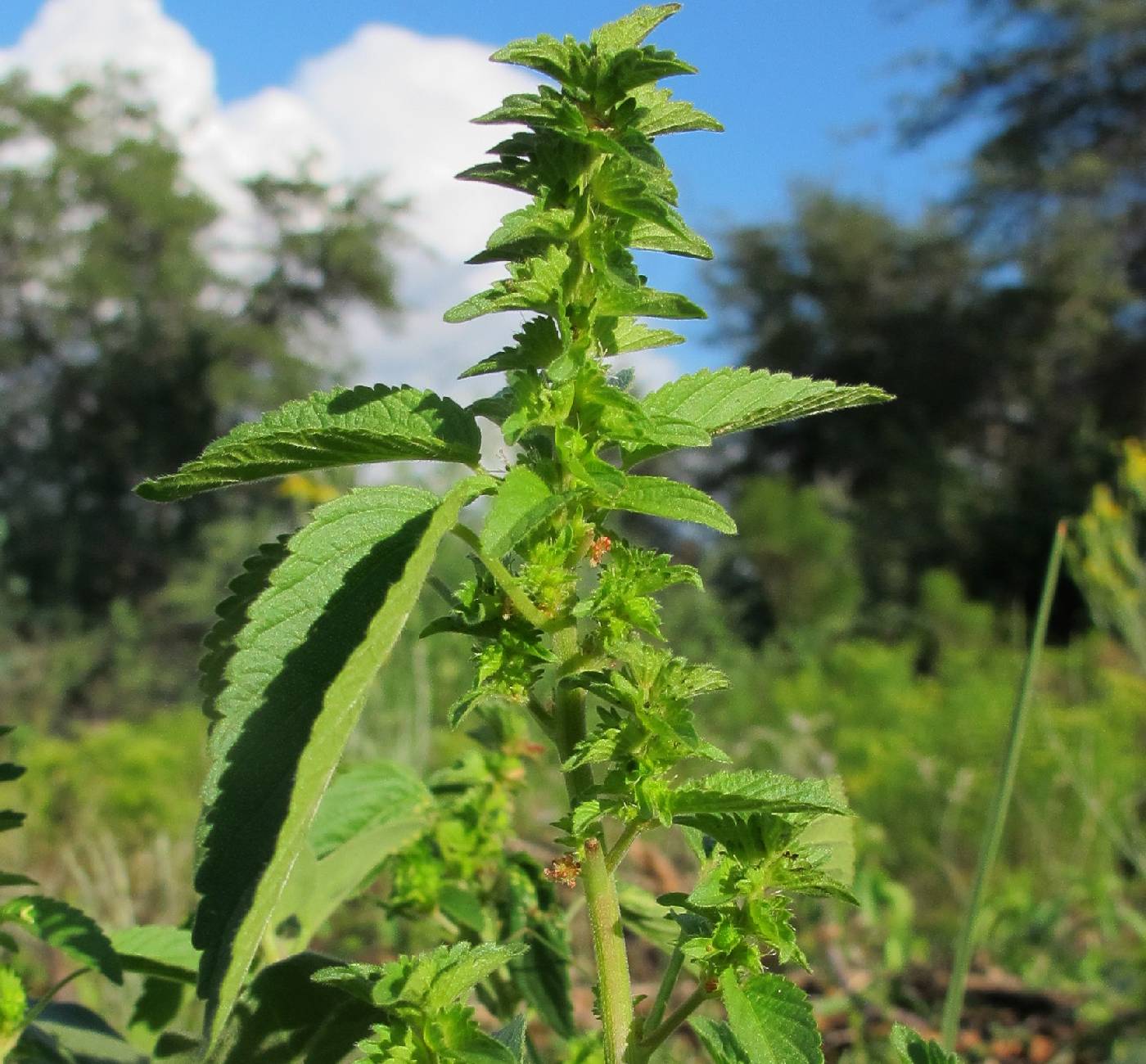Acalypha
|
Family: Euphorbiaceae |
PLANTS: Annual or perennial herbs, shrubs, or rarely trees, monoecious or dioecious, without latex. LEAVES: alternate, simple; stipules small. INFLORESCENCE: axillary or terminal, spike-like, rarely panicles, staminate, pistillate, or mixed, then most commonly pistillate below and staminate above. STAMINATE FLOWERS: very small, subsessile, several in the axil of a minute bract; calyx lobes 4; petals and disk 0; stamens 4-8, the anthers pendent, elongated, and twisted at maturity. TYPICAL PISTILLATE FLOWERS: sessile, 1-3 in the axil of an often large foliaceous bract; calyx lobes 3(-5); petals and disk 0; pistil with (1-)3 carpels, the ovary (1-)3-locular, the style branches usually dissected into thread-like segments. ALLOMORPHIC PISTILLATE FLOWERS: sometimes present, distal, differing from typical pistillate flowers by having the ovary strongly 1-3 lobed and the style subbasal, and often by being pedicelled and ebracteate. FRUITS: capsules with (1-)3 locules, each segment splitting and falling from the persistent columella; fruits of allomorphic flowers deeply lobed schizocarps. SEED: 1 per carpel, ovoid, usually carunculate, variously sculptured. NOTES: Ca. 400 spp. worldwide, chiefly of tropical and subtropical regions, a few cultivated as ornamentals. (Greek name for stinging nettle, some species resembling nettles, though not stinging). Levin, G. A. 1994. Madroiio 41:254-265. Miller, L. W. 1964. A taxonomic treatment of the species of Acalypha in the United States. Ph.D. dissertation, Purdue University. Pax, F. and K. Hoffmann. 1924. Euphorbiaceae-Crotonoideae-Acalypheae-Acalyphinae. In: A. Engler (ed.). Das Pflanzenreich, IV, 147, XVI(Heft 85):1-231. Radcliffe-Smith, A. 1973. Kew Bulletin 28:525-529. REFERENCES: Levin, Geoffrey A. Euphorbiaceae Part 1. Acalypha and Cnidoscolus. J. Ariz. - Nev. Acad. Sci. 29(1): 18. Monoecious; pet and disk none; staminate fls with 4 valvate sep and 4-8 stamens, the filaments slender, the anthers elongate and often curved or coiled; pistillate fls with 3(-5) sep; styles slender, elongate, irregularly branched or lacerate into filiform segments; capsule (1-)3-locular; seeds with a caruncle; herbs, shrubs, or trees with alternate, petiolate, stipulate, usually serrate lvs and minute fls in axillary or terminal, often conspicuous, racemiform condensed cymose infls, each fl or fascicle of fls subtended by a bract; our spp. annual herbs blooming from July to Oct., with staminate fls only 0.5 mm wide and aggregated into axillary heads or short spikes, the pistillate fls with initially small but rapidly accrescent bracts that equal or exceed the mature pubescent frs. 400, mostly New World. Gleason, Henry A. & Cronquist, Arthur J. 1991. Manual of vascular plants of northeastern United States and adjacent Canada. lxxv + 910 pp. ©The New York Botanical Garden. All rights reserved. Used by permission. |

